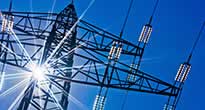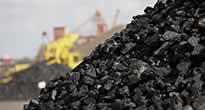The 2024 U.S. presidential election concluded with the victory of Republican candidate and former president Donald Trump, signaling anticipated shifts in environmental regulations and energy policies. Expected changes include potential reversals of recent EPA regulations, reallocations of unspent funds from the Inflation Reduction Act (IRA) and Bipartisan Infrastructure Law (BIL), and heightened support for domestic energy production.
As Trump prepares to take office in less than a week, this blog summarizes possible regulatory changes under the new administration and their implications for the energy sector. Please note that this document presents EVA’s analysis of likely outcomes for each of the rules and should not be relied upon as legal advice. A detailed PDF is attached with this summary for further insights.
Congressional Review Act
The Congressional Review Act (CRA), enacted in 1996, allows Congress to review and potentially overturn significant federal regulations from the final months of a prior administration. With a simple majority in both chambers, the CRA provides an expedited pathway for policy reversals. However, a presidential veto requires a two-thirds congressional majority to override.
The CRA establishes a lookback period that is typically the final 60 legislative days of the previous congressional session. For this administrative transition, the CRA’s lookback period likely started around August 1, 2024. Major regulations finalized before this date, such as the Greenhouse Gas (GHG) Rule, Effluent Limitation Guidelines (ELG) Update, and Mercury & Air Toxics Standards (MATS) Update, are beyond CRA reach. However, the Trump administration may leverage other mechanisms to challenge these policies.
Chevron Doctrine
The Chevron doctrine is a principle derived from the 1984 Supreme Court case Chevron U.S.A., Inc. v. Natural Resources Defense Council, Inc. The 2024 Supreme Court ruling in Loper Bright Enterprises et al. v Raimondo marked the end of the Chevron doctrine, which had long guided judicial deference to agency interpretations of ambiguous statutes. This ruling increases judicial scrutiny over administrative authority, amplifying opportunities for legal challenges.
The implications of this ruling are starting to unfold. For instance, in East Kentucky Power Cooperative, Inc. v EPA, the utility contested EPA’s regulation of legacy coal ash disposal sites, asserting statutory overreach. While the Supreme Court declined to hear the case, similar challenges are expected under the new judicial landscape, potentially reshaping regulatory boundaries.
Litigation Withdrawal, Stay Motion and Rulemaking
Major federal rules often face legal challenges, with affected parties frequently seeking stays. To secure a stay, petitioners must prove significant, irreparable harm if the rule proceeds and a strong likelihood of legal success. Courts may also consider the balance of hardships and public interest.
An incoming administration can withdraw or delay litigation on contested rules, signaling intent to revise them. Courts, however, retain discretion to grant such motions, considering other stakeholders’ interests. If paused or withdrawn, the administration may begin new rulemaking, adhering to the Administrative Procedure Act (APA), requiring public notice, comment, and a reasoned explanation for changes.
New rules must undergo cost-benefit analysis and justify deviations from previous assessments, making them vulnerable to legal challenges if inadequately supported. In some cases, courts may allow existing rules to remain active until revisions are finalized, creating the potential for a “remand without vacatur.”
Critical Environmental Regulations and Projected Developments
The major environmental regulations affecting the U.S. power and natural gas sectors are discussed below.
Greenhouse Gas (GHG) Rule:
The GHG Rule, finalized in April 2024 and published in the Federal Register in May, amends Sections 111(b) and 111(d) of the Clean Air Act to set emission limits for fossil fuel power plants and natural gas turbines. Legal challenges began following its publication, with the U.S. Supreme Court denying emergency stay requests in October 2024, citing insufficient evidence of immediate irreparable harm. Oral arguments were heard by the D.C. Circuit in December 2024, with a decision pending. If overturned, environmental groups may appeal to the Supreme Court, while upholding the rule would prompt opponents to do the same.
The Trump administration may seek to withdraw and revise the GHG Rule, citing scientific or economic deficiencies and leveraging its “Secret Science” rule, which limits the use of studies without publicly available data. This could exclude key studies, like the Harvard Six Cities Study, impacting the rule’s cost-benefit analysis. Compliance with the GHG Rule begins in 2030, adding urgency to ongoing debates.
Mercury and Air Toxics Standards (MATS):
The 2024 MATS Rule update tightens filterable particulate matter (fPM) limits for coal-fired EGUs from 0.030 lbs/MMBtu to 0.010 lbs/MMBtu, with compliance required by May 2027. About 11.6 GW of coal capacity will need emissions control upgrades. Legal challenges led to requests for a stay. Still, the D.C. Circuit denied the request in September 2024, and the Supreme Court denied seven stay applications on October 4, 2024, as petitioners failed to prove irreparable harm or a strong likelihood of legal success.
Since the rule was published in May 2024, it is outside the Congressional Review Act’s scope and cannot be repealed through it. However, the Trump administration could request a delay in litigation while formulating a less stringent replacement.
Effluent Limitation Guidelines (ELG):
EPA updated the Effluent Limitations Guidelines (ELGs) for steam electric power plants, targeting FGD wastewater, bottom ash transport water, legacy wastewater, and CRL at new and existing sources. On October 9, 2024, the Eighth Circuit denied a stay motion filed by Southwestern Electric Co. and others. The decision was appealed to the Supreme Court, where it remains pending while the underlying legal challenge continues. The incoming Trump administration may consider similar actions for this rule as with the GHG and MATS rules, including potential revisions or delays.
Coal Combustion Residuals Rule (CCR):
In April 2024, the Biden administration updated the Resource Conservation and Recovery Act (RCRA) to require coal companies to address contamination from legacy coal combustion residuals (CCR) impoundments, closing a 2015 loophole by mandating remediation of groundwater contamination at inactive sites. Kentucky and associated utilities petitioned for a stay, arguing the rule exceeds federal authority and imposes undue retroactive burdens. The D.C. Circuit denied the stay request on November 1, 2024, and the Supreme Court denied the application on December 11, 2024. The legal challenge to the rule’s validity continues in the U.S. Court of Appeals for the District of Columbia Circuit.
Good Neighbor Rule & National Air Quality Ambient Standards (NAAQS):
EPA’s National Ambient Air Quality Standards (NAAQS), set under the Clean Air Act, aim to protect public health (primary standards) and welfare (secondary standards, e.g., environment and wildlife). Reviewed every five years for six pollutants, these standards have evolved under recent administrations:
- Obama Administration: Strengthened NAAQS by lowering ozone limits from 75 ppb to 70 ppb and PM2.5 from 15 µg/m³ to 12 µg/m³, alongside adjustments to lead and SO₂ standards.
- Trump Administration: Retained existing ozone and PM2.5 standards, rejecting stricter recommendations, and introduced the “secret science” rule to limit the use of studies without publicly available data, later vacated by federal courts.
- Biden Administration: Reversed the “secret science” rule in 2021 and implemented the Good Neighbor Plan (GNR) in 2023 to address the 2015 ozone NAAQS. However, in June 2024, the Supreme Court stayed the GNR in some states due to legal challenges.
With the GNR stalled, the incoming Trump administration may repeal it. Still, it must address interstate pollution by updating the Cross-State Air Pollution Rule to meet the 2015 ozone NAAQS, as the current program only complies with 2008 standards.
Methane Emissions Standards for the Oil & Gas Sector
In December 2023, the EPA issued a methane rule establishing New Source Performance Standards (NSPS) and Emissions Guidelines to reduce methane and VOC emissions from oil and gas wells. Published in March 2024, the rule includes a “model rule” with presumptive standards for designated facilities, requiring states to develop equally protective plans or pursue alternative approaches. Legal challenges in the D.C. Circuit Court and Supreme Court to halt the rule were denied. The rule’s publication in March prevents its repeal under the CRA.
On November 12, the EPA issued another rule targeting methane emissions across the oil and gas supply chain, including a waste emissions charge starting in 2025 for facilities emitting over 25,000 metric tons of CO₂ equivalent annually. Efforts by a Republican-led Congress or administration may seek to weaken this rule through CRA or dismantle related provisions of the Inflation Reduction Act.
Regional Haze
EPA established the Regional Haze Rule (RHR) in 1999 under the Clean Air Act to improve visibility in 156 Class I national parks and wilderness areas, aiming for natural visibility by 2064. States must develop State Implementation Plans (SIPs) with updates every five years, initially requiring Best Available Retrofit Technology (BART) and later focusing on long-term strategies.
The program’s second implementation period (2018–2028) required SIPs by July 31, 2021. States missing the deadline or submitting inadequate SIPs may face Federal Implementation Plans (FIPs). Currently, 28 state SIPs are under review, while 10 states are still drafting their plans. EPA may expedite the SIP review process under the new administration, potentially applying less stringent standards.
Conclusion
At this time, there is no doubt that the change in the administration will result in significant and potentially disruptive changes in the energy and environmental areas. This discussion is not definitive as to what will occur but instead points out areas where there could be significant and impactful changes. Careful monitoring and potential involvement with the stay actions are helpful to ensure that the appropriate outcomes are reached.
In its Quarterly Environmental Report, EVA covers all major environmental regulatory updates and the major U.S. emissions markets. For more information, please email us at [email protected] or visit us at www.evainc.com.







